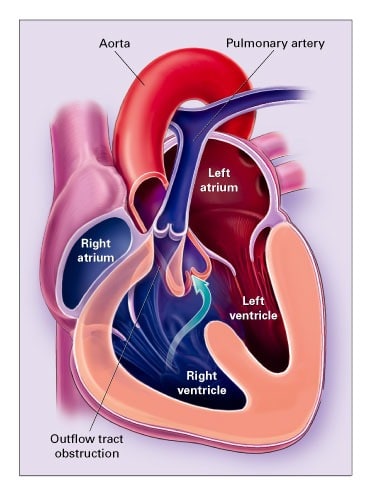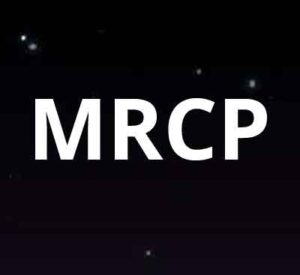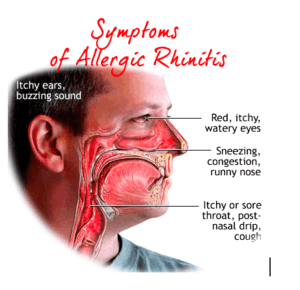Congenital heart disease (CHD) is the presence of one or more structural heart defects at birth. Congenital denotes that the condition is present at birth. Congenital cardiac disease in adults and children can alter how the heart pumps blood.
There are several distinct varieties of congenital cardiac abnormalities. This article examines adult congenital cardiac disease.
There are modest forms of congenital cardiac disease. However, complicated flaws can result in potentially fatal consequences. However, breakthroughs in diagnosis and therapy continue to increase congenital heart disease patients’ chances of survival.
Individuals with congenital heart disease require lifelong medical attention. The treatment may consist of regular checks (observant waiting), medicines, or surgery. If you have adult congenital heart disease, see your doctor about the frequency of your checkups.
Types of CHD
Listed below are examples of different types of CHDs.
- Atrial Septal Defect
- Atrioventricular Septal Defect
- Coarctation of the Aorta
- Double-outlet Right Ventricle
- d-Transposition of the Great Arteries
- Ebstein Anomaly
- Syndrome of Hypoplastic Left Heart
- Interrupted Aortic Arch
- Pulmonary Atresia
- Single Ventricle
- Tetralogy of Fallot
- Total Anomalous Pulmonary Venous Return
- Tricuspid Atresia
- Truncus Arteriosus
- Ventricular Septal Defect
Congenital Cyanotic and Acyanotic Heart Disease
Numerous medical professionals describe congenital heart disease as either cyanotic or acyanotic. In both cases, the heart does not pump blood as effectively as it ought to. Acyanotic congenital heart disease does not induce low oxygen levels in the blood, whereas cyanotic congenital heart disease does. Babies with low oxygen levels may suffer difficulty breathing and bluish-tinged skin. Babies with sufficient oxygen in their blood do not exhibit these symptoms, although they may still suffer issues such as high blood pressure later in life.
Symptoms
Adults who were born with a heart-related birth abnormality may not exhibit symptoms. If so, they may include:
- Problems breathing
- Problems with exercise
Infants and children with congenital cardiac disease may exhibit the following symptoms:
- Skin, fingernails, and lips have a blue hue (cyanosis, a condition caused by a lack of oxygenated blood)
- Rapid respiration and poor nutrition
- Poor weight gain
- Pulmonary infection
- Incapacity to exercise

Diagnosis
Congenital heart disease is diagnosed based on a murmur heard during a physical examination and the results of many diagnostic tests:
- Echocardiogram
- Echocardiogram performed using transesophageal echocardiography
- Intravascular ultrasound (IVUS)
- Heart catheterisation
- Chest radiograph
- Electrocardiogram (ECG or EKG)
- Magnetic resonance imaging (MRI)
- PET (positron emission tomography) imaging
Treatment
The treatment for congenital heart defects varies on the kind and severity of the abnormality. Some afflicted newborns and youngsters may require one or more heart or blood vessel operations. A technique known as cardiac catheterization can be used to treat some patients without surgery. A catheter is put through the blood arteries and into the heart, where a physician can collect measurements and images, conduct tests, or correct the issue. Occasionally, heart defects cannot be completely fixed, but these operations can enhance blood flow and heart function. It is crucial to emphasize that many persons with CHDs are not healed, even if their heart defect has been fixed. Below is further information regarding living with a CHD.
Prevention
Women who are pregnant or want to become pregnant can reduce their chance of giving birth to a child with a congenital heart abnormality by taking the following precautions:
- If you intend to get pregnant, discuss any prescription or over-the-counter drugs with your physician.
- If you have diabetes, ensure that your blood sugar levels are under control prior to conceiving. Additionally, it is essential to consult with your physician to treat the illness throughout pregnancy.
- If you were not vaccinated against rubella or German measles, avoid exposure to the disease and discuss preventative alternatives with your physician.
- If you have a family history of congenital cardiac abnormalities, discuss genetic screening with your doctor. Certain genes may contribute to the aberrant development of the heart.
- Avoid using alcohol and illicit substances while pregnant.
Complications
Heart complications
• Cardiac failure: It is a significant consequence of congenital heart abnormalities. Heart failure may develop years after the diagnosis of the problem. It can produce a number of symptoms, including severe breathing difficulties and abnormal heartbeats (arrhythmias).
• Heart murmur: Many individuals with congenital heart problems have a humming sound (heart murmur) detectable with a stethoscope even after the heart defect has been fixed. Most cardiac murmurs are benign (“innocent”). Occasionally, though, a heart murmur is abnormal and indicative of a cardiac issue. During examinations, the physician may listen for a murmur that might indicate an issue.
• Problems with heart rate and rhythm can occur in both children and adults with congenital cardiac abnormalities. There are several possible forms of rate and rhythm issues. Such abnormal beats may include atrial fibrillation. Or they may be a kind of tachycardia, a rapid heart rate.
• Heart valve disorder: if a kid has undergone a heart valve replacement, the valve may need to be replaced again as the child ages. Specifically, abnormally shaped heart valves can cause issues such as endocarditis or constricted or leaking heart valves.
• Endocarditis: A congenital cardiac abnormality might increase the risk of endocarditis, an infection of the heart. Your child must take exceptional care of his or her teeth and monitor for indications of skin infections to prevent this illness. If your kid is at high risk, antibiotics may be prescribed prior to certain dental and surgical procedures that might introduce germs or fungus into the blood. Antibiotics reduce the likelihood of contracting endocarditis.
Other issues
A cardiac abnormality may prevent a youngster from developing normally. Complicacies comprise:
• Slower-than-average adult height and weight development
• Developmental delays or impairments. The doctor will monitor your child’s growth over time and may conduct screening exams. You should also be aware of the predicted developmental milestones for children at each age. This might help you identify issues early or feel better about your child’s progress.
• Clubbing, a condition characterized by swollen finger and toe tips and protruding nails.
• Polycythemia, a condition characterized by an abnormal increase in the quantity of red blood cells. This may raise the chance of blood clots, which can result in heart attacks or strokes.
• Problems with the nervous system and brain An example of this is a brain infection. This can occur as a result of germs in the blood invading brain tissue.
• A greater likelihood of blood clots.
• Slower-than-average adult height and weight development
• Developmental delays or impairments. The doctor will monitor your child’s growth over time and may conduct screening exams. You should also be aware of the predicted developmental milestones for children at each age. This might help you identify issues early or feel better about your child’s progress.
• Clubbing, a condition characterized by swollen finger and toe tips and protruding nails.
• Polycythemia, a condition characterized by an abnormal increase in the quantity of red blood cells. This may raise the chance of blood clots, which can result in heart attacks or strokes.
• Problems with the nervous system and brain An example of this is a brain infection. This can occur as a result of germs in the blood invading brain tissue.
• A greater likelihood of blood clots.



